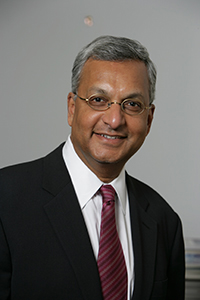On the Heels of Breakthrough Test for Kidney Transplant Patients the First International Nephrology Conference is Held in Qatar

As guest speaker, Dr. Manikkam Suthanthiran recently attended the “first ever” Nephrology Conference held in Qatar. The event was covered in The Peninsula, a Qatar newspaper featuring local news with a global vision. Dr. Suthanthiran was quoted in the article on a recent groundbreaking “non-invasive” test for kidney transplant patients that he and his team developed in their laboratory at NYP/WC.

Dr. Suthanthiran
“This non-invasive test is a good substitute for allograft needle biopsy; it could be done repeatedly without any inconvenience to the patient; it’s easy and safer than the traditional invasive needle biopsy of the allograft,” explained Dr. Suthanthiran in The Peninsula (February 10, 2013). The new test is part of a multicenter trial, supported by the NIH, and utilizes a urine sample, instead of an invasive biopsy, to monitor a patient’s progress regarding fibrosis post kidney transplantation. Dr. Suthanthiran’s laboratory at NYP/WC processed and measured 5,000 samples for 10 different genes, using the assay they developed in their lab. Their results were sent to the NIH statistical core for further analysis. The project, involving five medical centers, was “blinded” (meaning the Suthanthiran Laboratory did not know the status of the patients) and it was a first of its kind study.
At the First Qatar Nephrology Conference, Dr. Suthanthiran met with Dr. Hassan Al Malki, Conference Chairman and Head of Nephrology at Hamad Medical Corporation (HMC), and many other physicians, all of whom look forward to expanding their interchange of expertise while working to upgrade services for patients at HMC who are undergoing dialysis for kidney failure. Another goal is to establish a new laboratory in Qatar for renal testing research.
Looking towards the future, “We are working with the Hamad Medical Corporation and WCMC-Q to set up a research laboratory in Qatar. It will need another three to five years of work,” said Dr. Suthanthiran.
Click for Landmark Paper in Transplantation (Suthanthiran Lab)